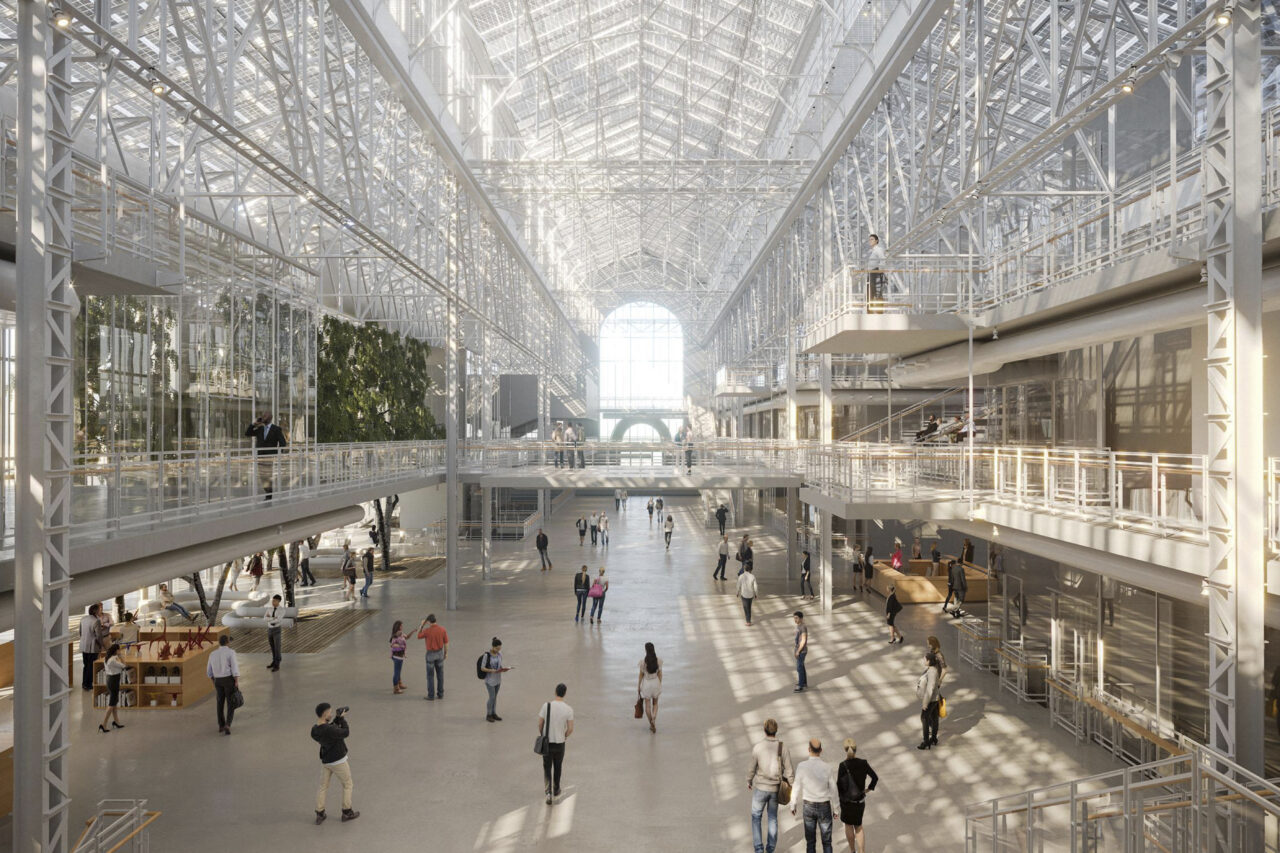
Moscow's oldest thermoelectric power plant, built by the Tsars in 1907 and decommissioned at the beginning of this century, is transformed by Arch. Renzo Piano's project for the VAC Foundation into a Museum of Contemporary Art. The intervention involved maintaining the original soul with the preservation of the steel structures. The chimneys were used to capture clean air for ventilation of the building.
The area in which the GES-2 museum is located is part of an extremely vibrant district known today as Red October. This area is home to a chocolate factory turned innovation center for start-ups, cafes and restaurants, the Strelka Institute, an urban laboratory offering an educational and research program, and the Udarnik Theater, an important example of Russian architecture.
The synergies between these buildings and the V-A-C Foundation help strengthen the cultural and multigenerational character of this part of the island, making it a popular destination for both Muscovites, Russians and tourists from abroad.
Arch. Renzo Piano's design transforms this building into a space conceived as an articulated experience ranging from visual and performing arts to a free civic space for people.
Inside the building 20,000 m² of spaces and functions are organized into four main hubs:
The exhibition hub is a combination of spaces of different sizes and heights, offering a variety of spatial conditions to accommodate any kind of artwork. The educational hub offers a look at exhibitions and includes the School of Art, dedicated to training a new generation of curators, critics and art historians, and Lifelong Learning, with classrooms and workshops geared toward the general public. Also part of this hub are several artist residencies with workshops located in the north tower.

The more than 100-year history of the building, connected with disuse and lack of maintenance, has resulted in significant deterioration of the structures.
The main problems involved the basement, where water infiltration caused damage to the masonry walls and the advanced state of deterioration of the above-ground steel structures.
The carpentry, affected by corrosion, had many deformed elements and some nailed and welded joints that were no longer efficient.
Thus, structural consolidation was the preliminary intervention that the building needed as part of its redevelopment.
The main approach was conservative, with the intention of maintaining as much as possible of the existing structures, an integral part of the soul of the building, which is considered a Cultural Heritage Site. The masonry and steel structures were consolidated and reinforced.
In order to detect defects and degraded structural elements, it was necessary to carry out a comprehensive structural investigation with specific tests on different materials, both during the design phase and during the actual disassembly of the existing apparatus.
info@buromilan.com
stampa@buromilan.com
C.F./P.I. 08122220968
C.D. M5UXCR1
Via Thaon di Revel, 21
20159 Milan - Italy
T +39 0236798890
Santa Croce 458/A
30135 Venice - Italy
T +39 041 5200158